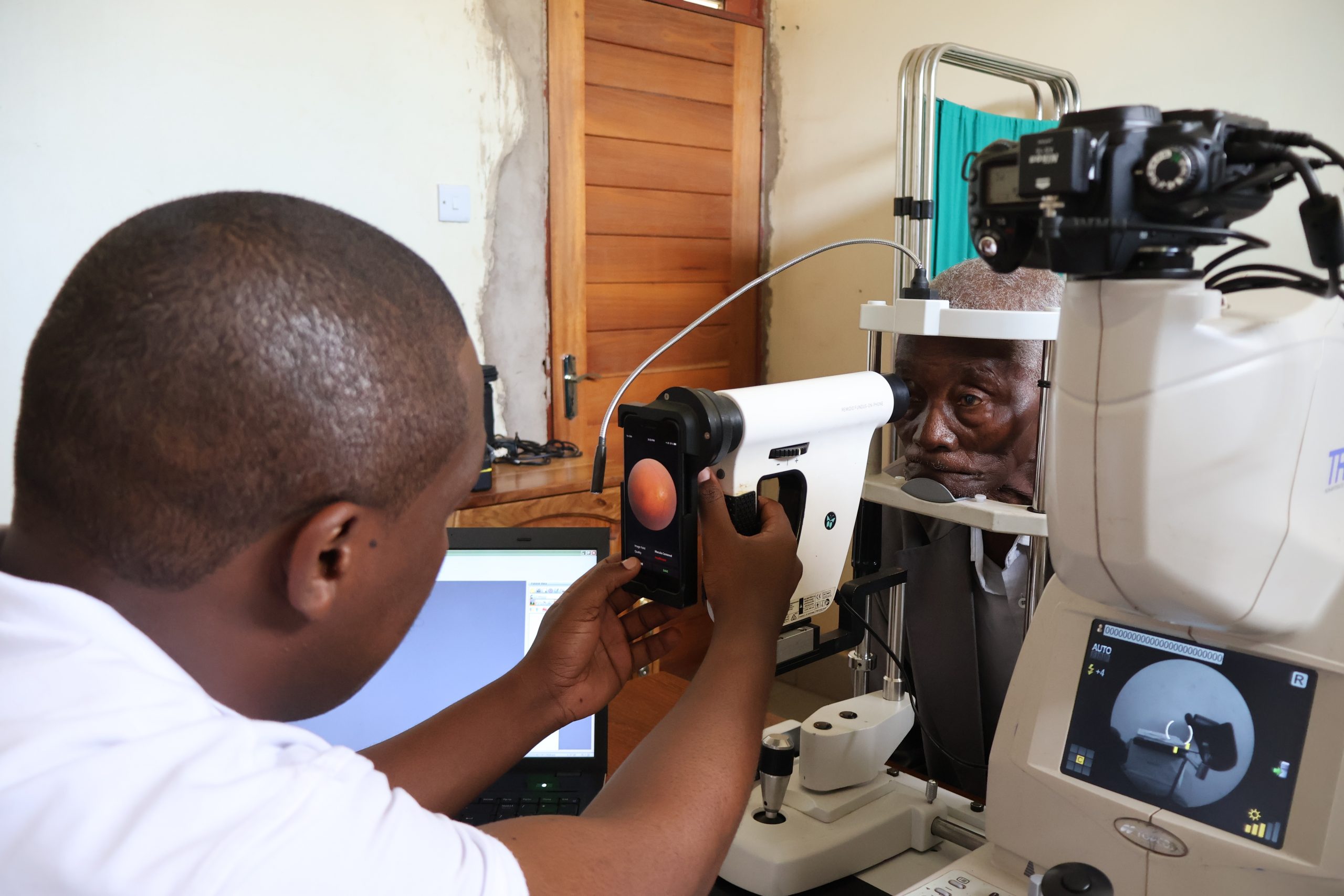Artificial intelligence (AI) holds transformative potential for health, particularly in eye care where it has demonstrated significant promise.
The diagnosis and screening of eye conditions frequently relies on image-based analysis, and recent studies suggest that AI can match or even surpass humans at these tasks. With many places around the world lacking trained specialists, AI could offer faster, cheaper and more efficient referrals than current systems, freeing up healthcare workers for other duties and allowing more people to receive treatment.
At the International Centre for Eye Health we are at the forefront of researching AI for eye care in low-income settings, and several current projects are focused on assessing its use for improving sight and people’s lives worldwide:
Diabetic Retinopathy
Diabetic retinopathy (DR) is a complication of diabetes that affects the blood vessels in the retina, the light-sensitive tissue at the back of the eye. Over time, high blood sugar levels can damage these tiny blood vessels, leading to vision impairment and, if left untreated, irreversible blindness.
The early diagnosis and treatment of DR is known to preserve vision; this is done successfully in the UK through the national DR screening programme. However, there are very few DR screening programmes in Africa, and those that do exist suffer from a shortage of specialist eye care staff to run the programmes and high rates of loss to follow-up.
In Tanzania, ICEH are running a clinical trial to assess whether using AI in a real-world programme can improve DR screening outcomes for patients and help prevent people losing vision from DR.
The advantages of AI are:
1) a reduction in workforce pressures by automating clinical decision making
2) providing a diagnosis at the point of screening, compared to several days or more for a doctor to do the same
This could increase the proportion of people with DR successfully identified and referred to the eye clinic where they can access treatment to prevent sight loss, whilst also potentially reducing time and costs across the programme.
Our partners for the project are the Kilimanjaro Christian Medical Centre in Moshi and Muhimbili Hospital in Dar es Salaam. Funding is from the British Council for the Prevention of Blindness (BCPB), Christian Blind Mission (CBM) and Sir Halley Stewart Trust.
The results are expected in 2025.
Retinopathy of Prematurity
Retinopathy of prematurity (ROP) is an eye disease that occurs in premature infants, primarily those born before 31 weeks or with a low birth weight. It is caused by abnormal blood vessel growth in the retina. In severe cases, ROP can lead to retinal detachment and blindness.
To treat ROP and prevent sight loss in children, it must be accurately diagnosed with repeat screening after birth. Current screening methods are costly and rely on specialized equipment that is often unavailable in low- and middle-income countries.
In Nepal, ICEH will run a study comparing the current (expensive) standard equipment against cheaper, smartphone-based cameras, while comparing human assessment of the images from both devices against an AI image algorithm.
The hope is to reduce the current burden on doctors to spend time on diagnosing ROP, and allow clinics with fewer resources to have equipment available to perform diagnosis, thereby reducing unnecessary sight loss in children.
Our partners for the project are Nepal Netra Jyoti Sangh (NNJS), Tribhuvan University Teaching Hospital (TUTH), Kathmandu Medical College and the Tilganga Institute of Ophthalmology. Funding for the project is thanks to Velux Stiftung.
Corneal Infections
Corneal infection, or microbial keratitis (MK), is a common blinding eye condition, caused by an infection of the front of the eye (cornea). The infection may be caused due to various reasons, but a common cause in some countries is occupational eye injuries, for example farming.
Corneal infections in low- and middle-income countries are mainly caused by bacteria or fungi. In order to properly treat an infection and prevent sight loss, it is important to know what is causing it. However, diagnosing this is a challenge due to limited trained specialists and diagnostic laboratories.
This project will develop and test a smartphone-based artificial intelligence (AI) tool for diagnosing corneal infections in Nepal. The study will identify AI models that are capable of accurately distinguishing the type of infection present based on a captured image of an eye with infection.
The aim is to enable prompt referral and initiation of the correct treatment in low-resource rural areas, preserving eyes and vision for people with this painful condition.
Our partners for the project are The Sagarmatha Choudhary Eye Hospital and NNJS. Funding for the project is thanks to Velux Stiftung.
Collectively, alongside our international partners, we hope to provide evidence that will allow low and middle-income countries to treat more people with potentially blinding eye conditions at scale and lower cost using AI.
To find out more about our projects, visit our research pages or get in touch at iceh@lshtm.ac.uk

